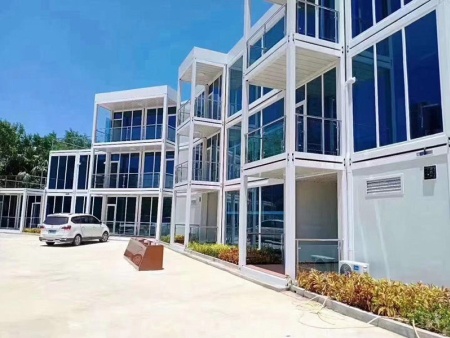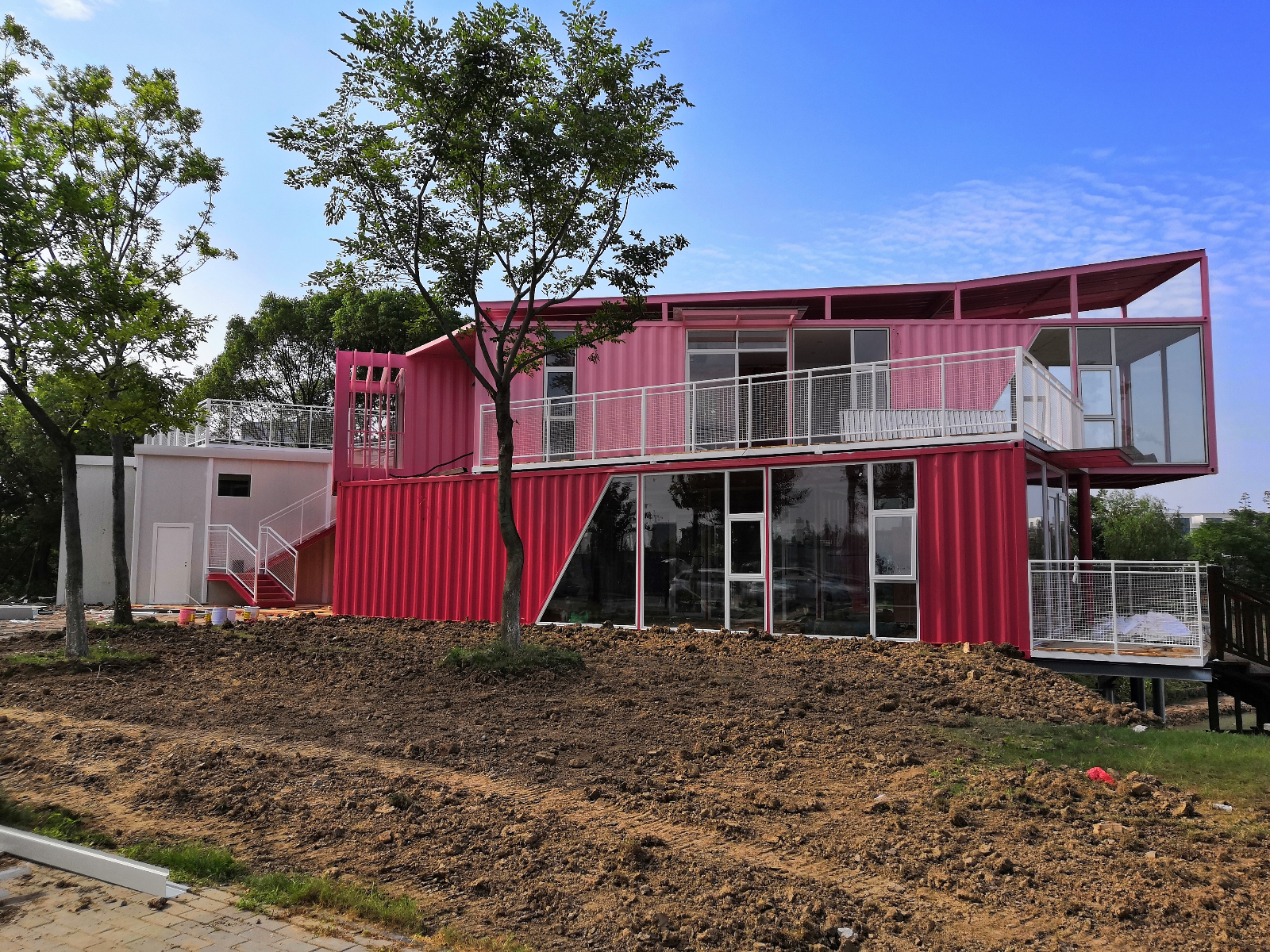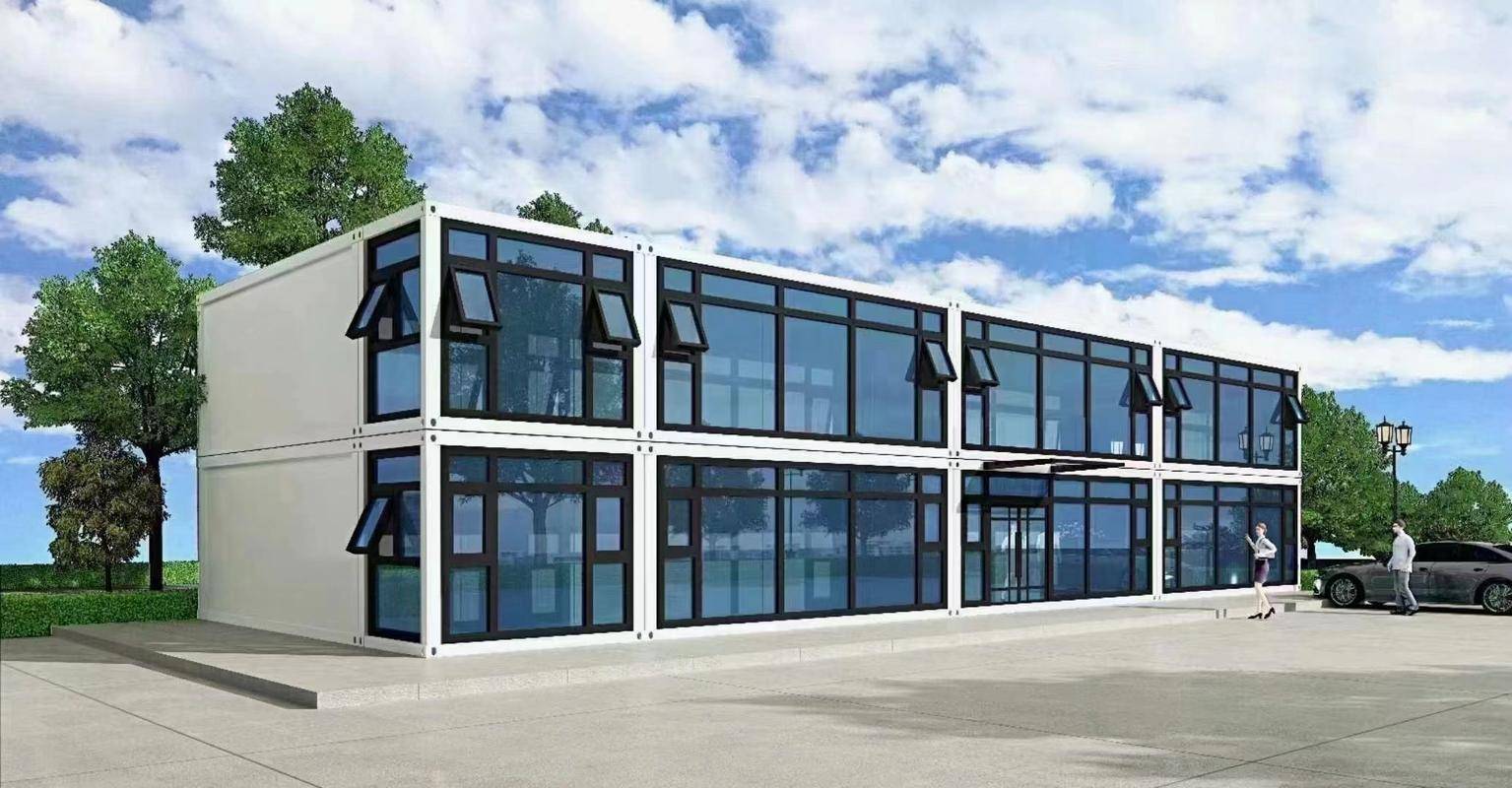
I. Modular features of container buildings
Standardised design
The container itself has a standardised size and structure, which enables the container building to make full use of these standards in the design stage for efficient planning and layout. Designers can flexibly combine multiple containers according to different functional requirements to create a variety of shapes and sizes of building space.
Standardised design also facilitates prefabricated production of buildings, improving construction efficiency and reducing costs. In the factory, the containers can be modified and processed according to uniform standards, ensuring stable and reliable quality and performance of each module.
Rapid assembly and disassembly
The modular nature of the container building makes it possible to assemble it quickly at the construction site. As the container has already completed most of the processing and decoration work in the factory, only simple connection and installation are required on site. This greatly shortens the construction cycle and reduces the impact on the surrounding environment.
At the same time, when the building needs to be dismantled or relocated, the container building can also be easily dismantled and transported. This mobility makes container buildings a great advantage in the field of temporary construction and emergency relief.
Space Flexibility
The modular design of the container provides great flexibility for the creation of building space. Through different combinations, various forms of building layouts such as single-storey, multi-storey and staggered can be formed. At the same time, the internal space of the container can also be transformed according to the needs, such as adding partitions, opening windows, installing stairs, etc., to meet different functional needs.
This spatial flexibility makes the container building able to adapt to a variety of complex site conditions and use requirements, providing more creative space for designers.
Second, the low-carbon mode of container building
Recyclability of materials
Containers are usually made of steel, which has high strength and durability. At the end of a building's service life, containers can be recycled, reducing the consumption of natural resources and the generation of waste.
Compared with traditional building materials, steel has a higher recycling rate, which can effectively reduce the negative impact of the construction industry on the environment. In addition, the recycling and reuse of containers is also in line with the concept of sustainable development, providing a viable way for the green transformation of the construction industry.

Energy saving and environmental protection
Container buildings also have certain advantages in terms of energy saving. As the metal shell of the container has good thermal insulation properties, it can reduce energy consumption. In the design and construction process, energy-saving equipment and technologies, such as solar panels, energy-saving light fixtures, and high-efficiency thermal insulation materials, can be further adopted to improve the energy utilisation efficiency of the building.
Meanwhile, the construction process of container buildings is relatively simple and produces less construction waste. This not only reduces pollution to the environment, but also lowers construction costs. In addition, container buildings can use green and environmentally friendly decoration materials, such as environmentally friendly paint and renewable wood, to further improve the environmental performance of the building.
Embodiment of the concept of sustainable development
The modularity and low-carbon mode of container building embodies the concept of sustainable development. It not only meets people's needs for building functions and aesthetics, but also focuses on the protection of the environment and the rational use of resources. By adopting recyclable materials, energy-saving technologies and green decoration materials, container building realises a harmonious symbiosis between the building and the environment.
In addition, the rapid assembly and disassembly characteristics of container buildings also make it possible to reuse them in different locations, increasing the utilisation rate of the building and reducing the waste of resources. This mode of sustainable development provides new ideas and directions for the future development of the construction industry.

Third, the application prospects of the container building
Temporary building field
Container building has a wide range of application prospects in the field of temporary construction. Due to its rapid assembly and disassembly characteristics, it is very suitable for temporary offices, workers' dormitories, warehouses, etc. on construction sites. In addition, container buildings can also be used as temporary venues, commercial shops, catering facilities, etc. in large-scale events, exhibitions, music festivals and other occasions.
Temporary buildings usually need to be built and put into use within a short period of time, and container building just meets this demand. It can not only respond quickly to market demand, but also reduce construction costs and improve resource utilisation.
Creative Architecture Field
The modular design and unique appearance of container buildings provide rich inspiration for creative architecture. Designers can make containers into a variety of creative architectural works, such as art exhibition halls, cafes, and bed and breakfasts, through clever combination and transformation.
These creative buildings not only have practical functions, but also become a bright landscape in the city, attracting the attention of many tourists and citizens. The creative application of container architecture has brought new opportunities for the cultural construction of cities and the development of tourism.
Sustainable Building Field
As people's concern for environmental protection and sustainable development continues to grow, container building, as a low-carbon, environmentally friendly form of construction, also has great potential for development in the field of sustainable construction. It can be used as a construction solution for sustainable housing, green office buildings, eco-parks, etc., providing people with a more comfortable, healthy and environmentally friendly living and working environment.
At the same time, the technology and experience of container building can also provide a reference for the green transformation of traditional buildings, and promote the entire construction industry to move forward in the direction of sustainable development.
In conclusion, the modularity and low-carbon mode of container building brings new opportunities and challenges for the construction industry. It not only has the advantages of high efficiency, flexibility and recyclability, but also embodies the concept of sustainable development. In the future development, container building is expected to play a greater role in the fields of temporary building, creative building and sustainable building, creating a better living environment for people.
